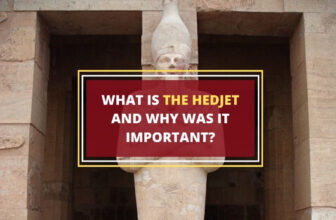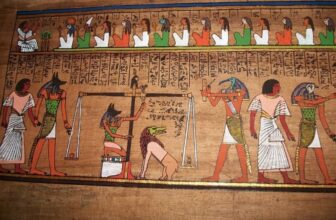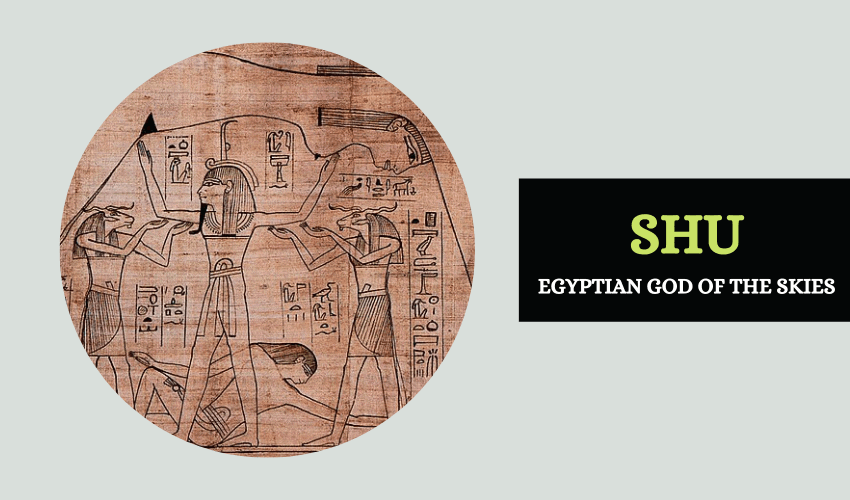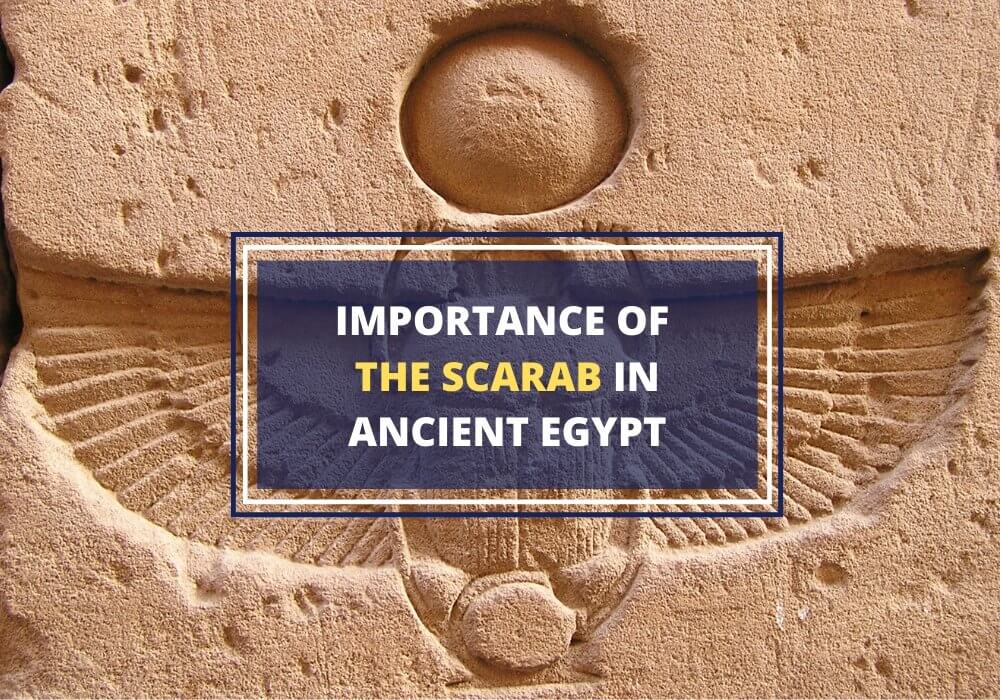
Table of Contents
The scarab is one of the most frequently seen symbols in Egyptian culture, mythology, and hieroglyphics. That’s hardly surprising given how common the scarab “dung” beetles were and still are in the region.
Also, thanks to its roundish shape, the scarab symbol was a popular choice for jewelry and clothing ornamentation. A playful and vivid symbol, scarabs were usually meant to be worn by the living as it represented the never-ending daily cycle of life.
What Is the History of the Scarab Symbol?
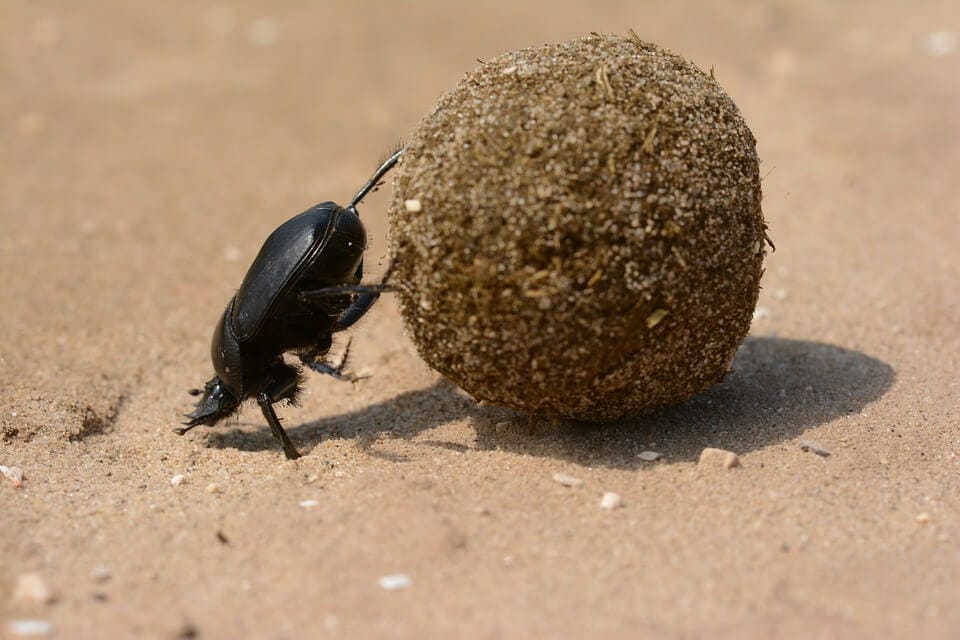
The scarab beetles were more than just common bugs in Egypt, they also used to captivate people’s interest with their curious behavior.
1. Origins of Scarab Symbolism
Called “dung beetles”, the Scarabaeus sacer insects have the practice of shaping animal dung into balls and rolling them to their nests. Once there, the insects lay their eggs inside the dung ball, giving them protection, warmth, and a food source for the soon-to-be-hatched eggs. This behavior puzzled the ancient Egyptians, who thought the scarab eggs were “spontaneously generated” from the dung balls.
Unsurprisingly, these peculiar dung beetles quickly made their way into Egyptian myths. The ancient people in the region came to believe that the sun “ball” was also rolled in the sky in a similar manner, and therefore portrait the god Khepri as a scarab-headed deity. Khepri was the god tasked with the job of helping the sun to rise every morning, i.e. to roll it across the sky.
2. Scarab Popularity on the Rise
By the end of the First Intermediate Period in Egypt (~2,000 BCE or 4,000 years ago), the scarabs had already become the most popular symbol. They had become widely used as governmental and trade seals, they were used for rings, pendants, clothes’ buttons, earrings, and other ornaments, and much more. They were also commonly engraved on the tombs and sarcophagi of pharaohs and other royal and nobility figures, likely because they too “made the world go round”.
3. Scarab Symbol in Use
Probably the most famous historical piece of art related to the Egyptian scarab was the golden scarab of Nefertiti discovered in the Uluburun shipwreck, dated to the 14th century BCE. Amenhotep III was also famous for having commemorative scarabs made as royal gifts or for propaganda.
More than 200 of his scarabs have been unearthed as of today so the total number is likely to be in the high hundreds or more. Amenhotep’s scarabs were large, ranging from 3.5cm to 10cm, and were beautifully crafted out of steatite. For most of Egypt’s history, scarabs weren’t in any way exclusively used by pharaohs and the nobility, and anyone could craft or wear a scarab symbol if they so chose.
Scarab figurines and symbols were often engraved with proverbs and short prayers to the gods such as the famous “With Ra behind there is nothing to fear.” As these engravings are usually highly abstract and metaphorical, however, they are often difficult to translate properly.
4. Decline of the Scarab
Scarabs remained hugely popular all throughout Egypt’s Middle Kingdom but slowly started declining in popularity during the New Kingdom period (between 1,600 and 1,100 BCE). Then, the use of scarabs to bear the names and titles of royalty and public officials almost completely came to a stop. However, they continued being used to represent gods and other mythological figures.
While we tend to find the scarab beetle somewhat hilarious, rolling its balls of turds around and fighting over them with other beetles, we don’t tend to give it enough credit. It’s a highly efficient, industrious and savvy creature with incredible navigational skills.
What Does the Scarab Symbolize?
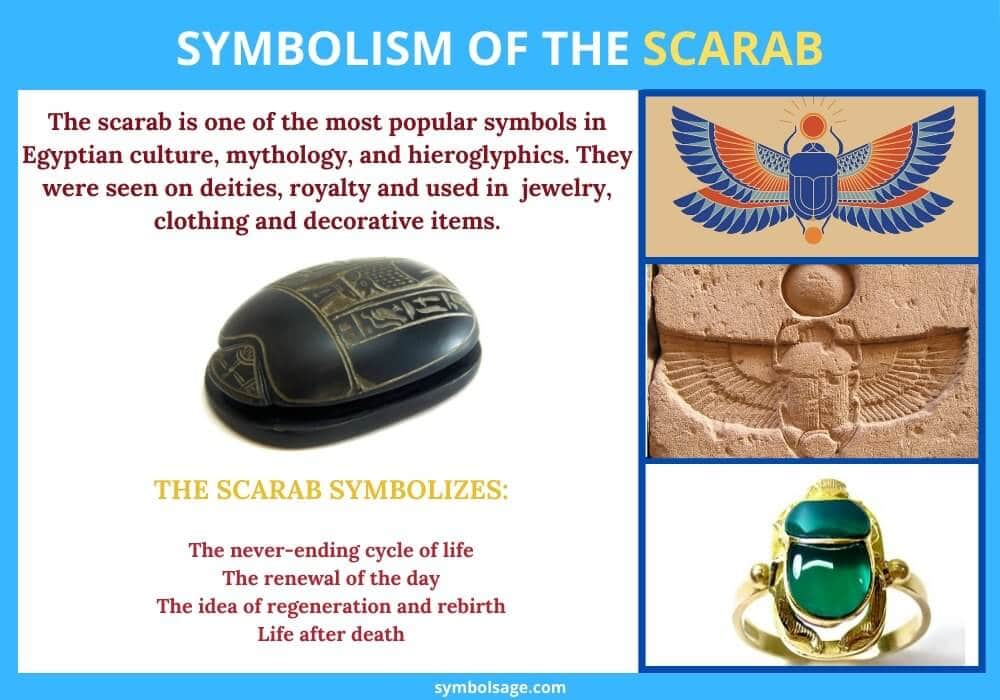
As the ancient Egyptians believed in life after death, scarabs were often used to symbolize that concept as well as the simply day-to-day cycle people went through. The most famous “scarab god” was Khepri, as the one who rolled the sun into the sky, but the beetles weren’t exclusively used to represent just this deity. They were more of a universal symbol that was widely used in almost any context.
The scarabs’ symbolism has remained consistent throughout the different periods of Egyptian history. They were associated with:
- The never-ending life cycle – the scarab ate the dung balls and laid its eggs within these balls, only for the eggs to hatch and the cycle to repeat itself all over again
- The renewal of the day – the scarab and the dung ball represented the movements of the sun across the sky
- Life after death – much like the sun coming back to life in the morning or the scarab beetle coming out of the dung ball, the creature symbolized life after death, rebirth, regeneration and fresh beginnings
- Immortality – the scarab’s cycle of life, and its symbolism of the sun, symbolized immortality and everlasting life
- Resurrection, transformation, creation – the scarabs hatched within the dung balls and came out of as though from nowhere, signifying creation and resurrection.
- Protection – scarab amulets were often worn for protection
What’s a Scarab Amulet?
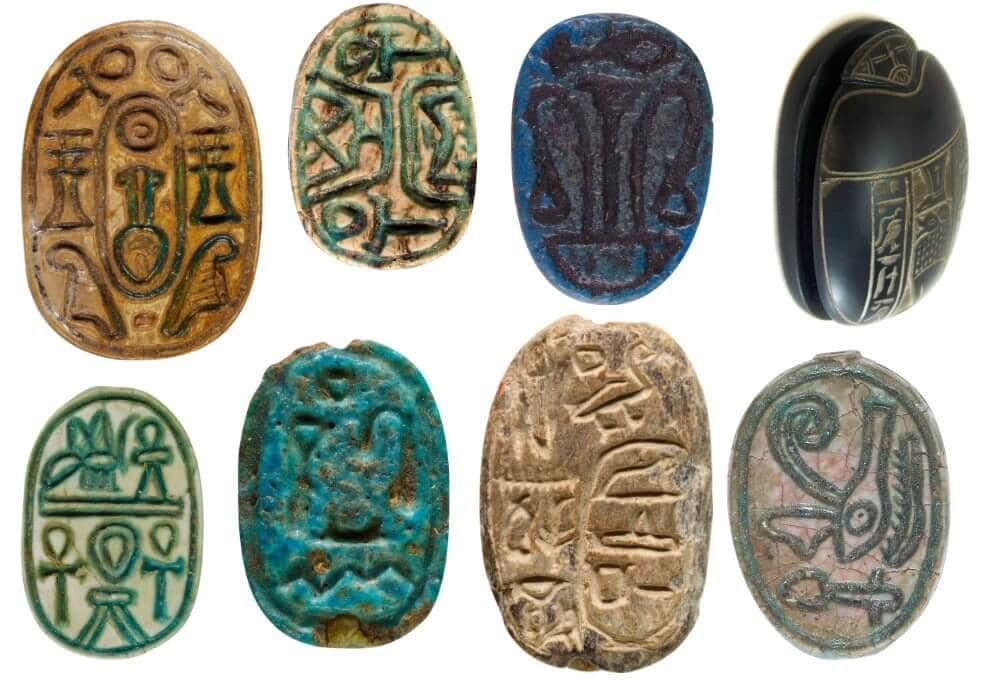
A variety of scarab amulets
Scarab amulets, called scaraboid seals, were very popular during ancient Egyptian times, and came in a range of sizes and designs. Most featured a closed scarab while some featured winged versions. Many of these ancient scarab amulets have been found, all featuring engravings and images.
These were popular as funerary amulets and were meant to guarantee the rebirth of the deceased person. They were meant to protect the person who owned them and were often carried around. They also signified life.
Even today, carved scarab amulets are still popular among collectors, jewelry lovers and those who admire ancient objects. Scarab amulets are often crafted into jewelry designs, or carved out of softer gemstones such as jade.
Scarab Symbolism in Art and Fashion Today
In contemporary, non-Egyptian art, scarabs are still widely recognized with their original meaning and symbolism and are still often used for jewelry and clothing.
Many people in the west do have an aversion to bugs, however, which somewhat limits the wide appeal of the scarab. In Hollywood blockbuster movies about Egypt, for example, the beetles have often been represented as pests and something to be feared or repulsed by which hasn’t helped their popularity.
For those who recognize their actual symbolism and meaning, however, scarabs make for beautiful art, jewelry, and ornamental pieces. There are beautiful accessories, pendants, earrings and charms, depicting the scarab beetle, either with outstretched wings or folded wings. There are also highly stylized versions of the scarab, which make for beautiful decorative motifs and jewelry designs. Below is a list of the editor’s top picks featuring the scarab symbol.
In Brief
The scarab, although just a humble dung beetle, was revered and celebrated in ancient Egypt. It was highly symbolic and was associated with gods and pharaohs. Today, the symbol of the scarab continues to be used in jewelry, fashion and pop culture.
If you want to learn more about Egyptian symbols, check out our related articles:







